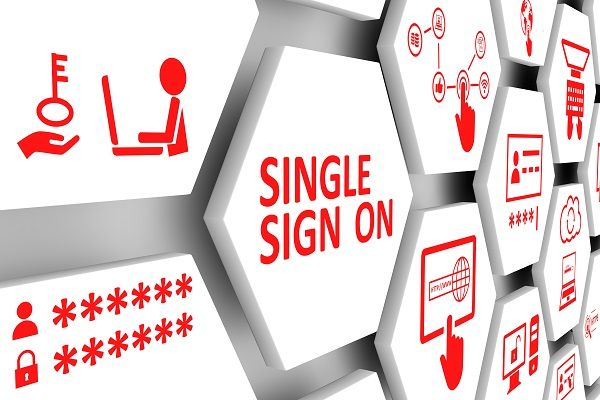Imagine having a personal assistant who can help you with your Word, PowerPoint, Excel, Teams, and Outlook work. That is where Microsoft 365 Copilot comes in. It can help you write, edit, and summarize documents by giving suggestions based on your prompts. You can easily create professional-looking ...
The Benefits of Single Sign-On (SSO) and How It Can Save Your Business Time and Money
Information Technologies | David Steele | Wednesday, May 31, 2023Single Sign-On (SSO) is a mechanism that allows users to authenticate themselves once and gain access to multiple applications or systems without the need to re-enter their credentials every time. It provides a seamless and convenient experience for users who only have to remember one set of login credentials while also improving security by reducing the risk of compromised or forgotten passwords.
SSO uses standards-based protocols such as OAuth, OpenID Connect, and SAML to exchange identity and authentication information between the user's device and the applications they are trying to access. When a user logs into one application, the SSO system generates an authentication token that is then used to grant access to other applications that support SSO. This way, the user can navigate between different systems without logging in again, even if various organizations host those systems and use other technologies.

Cost Savings
In addition to improving user experience and security, SSO can lead to cost savings and increased productivity for organizations. For example, SSO can save time and reduce frustration by reducing the number of login screens that users must deal with. It can also simplify user management and reduce the burden on IT departments, which manage fewer user accounts and passwords.
Microsoft is implementing Single Sign-On (SSO) capabilities in their popular cloud-based productivity suite, Microsoft 365 (M365). With SSO, users of M365 only need to authenticate once and can then easily access various systems and applications integrated with M365 without repeatedly entering login credentials.
SSO is made possible in M365 through industry-standard security protocols such as Security Assertion Markup Language (SAML) and OpenID Connect. These protocols allow M365 to interact with various services, including third-party applications and identity providers, to grant users seamless access to multiple resources. In addition, the authentication process is secured with
Boosts Productivity
One prime example of how SSO can boost productivity is by streamlining access to multiple applications for employees within an organization. Without SSO, users typically must log in and out of different applications repeatedly throughout the day, resulting in lost time and reduced efficiency. However, with SSO, users can securely access all their authorized applications with a single set of credentials, thus eliminating time wasted on repetitive login tasks. In addition, the streamlined access to various applications simplifies the user experience, thus increasing the overall productivity and efficiency of the workforce.
Moreover, SSO drastically reduces the burden on IT departments, who would otherwise have to manage multiple user accounts and passwords across various systems and applications. By freeing up IT resources, organizations can focus on more critical business growth and development tasks.
Enhances Security
SSO also enhances security by reducing the risk of password-related vulnerabilities such as phishing attacks, credential stuffing, and brute-force penetration. Since users have to remember only one set of credentials, they have fewer chances of resorting to weak or easily guessable passwords.
Industries that rely on SSO
Single Sign-On (SSO) is widely adopted by many industries thanks to its numerous user experience, productivity, and security benefits. Some industries that rely on SSO include finance, healthcare, education, e-commerce, and government.
In the finance industry, for example, SSO is critical in streamlining access to various applications and systems, such as trading platforms, payment gateways, and customer portals. As a result, SSO saves time and reduces the risk of fraudulent activities, which is crucial in the finance industry where security and accuracy are of utmost importance.
SSO enables clinicians and staff to access multiple applications and systems with single credentials, eliminating the need to remember multiple usernames and passwords in the healthcare industry. This results in significant time savings and enhanced productivity, allowing healthcare professionals to focus more on providing quality patient care. SSO also improves compliance with regulatory requirements such as
In the education industry, SSO simplifies the login process for students, faculty, and staff, making it easier for them to access various learning management systems, online libraries, and other educational resources. SSO also enhances data security, allowing institutions to control access to sensitive information and protect against unauthorized third-party access.
SSO makes the shopping experience smoother and more convenient for customers, as they only need to authenticate once to access multiple apps and services provided by the same vendor In the e-commerce industry. This eliminates the need for repetitive login tasks, thus saving time and reducing cart abandonment rates.
In the government sector, SSO enhances security and facilitates access to sensitive information across various agencies and departments. By enabling cross-domain access to protected resources, SSO streamlines the login process for government employees, contractors, and partners while improving compliance with regulatory requirements and cybersecurity standards.
Overall, Single Sign-On (SSO) is a powerful mechanism that can simplify user authentication and access management, leading to increased productivity for the workforce while freeing up IT resources. Moreover, it enhances security and reduces password-related vulnerabilities, making SSO a win-win solution for users and organizations.
How Intrada Can Help
SSO adoption will continue to grow as more businesses realize its advantages. Additionally, by eliminating the need for multiple usernames and passwords, SSO has helped reduce the risk of data breaches due to weak or stolen credentials. As a result, companies can have peace of mind knowing that their data is safer. If you would like to learn more about how your company can benefit from SSO or like to enhance your current SSO configuration, give us a call.
The High Stakes of Cybersecurity: Why Busines...
Cyber security awareness, while not in the media spotlight, has never been more critical as the world becomes more digitally interconnected. Cybercrime is an ever-growing threat, with criminals constantly developing new and innovative ways to exploit vulnerabilities in digital systems. As technology...
Contact Us
- 800-858-5745
31 Ashler Manor Drive
Muncy, PA 17756
Office Hours
Monday - Friday
8 AM - 5 PM EST
Intrada Technologies


Copyright © 2025 - Intrada Technologies - Privacy Policy and Disclaimer
Our website uses cookies and analytics to enhance our clients browsing experience. Learn More /
